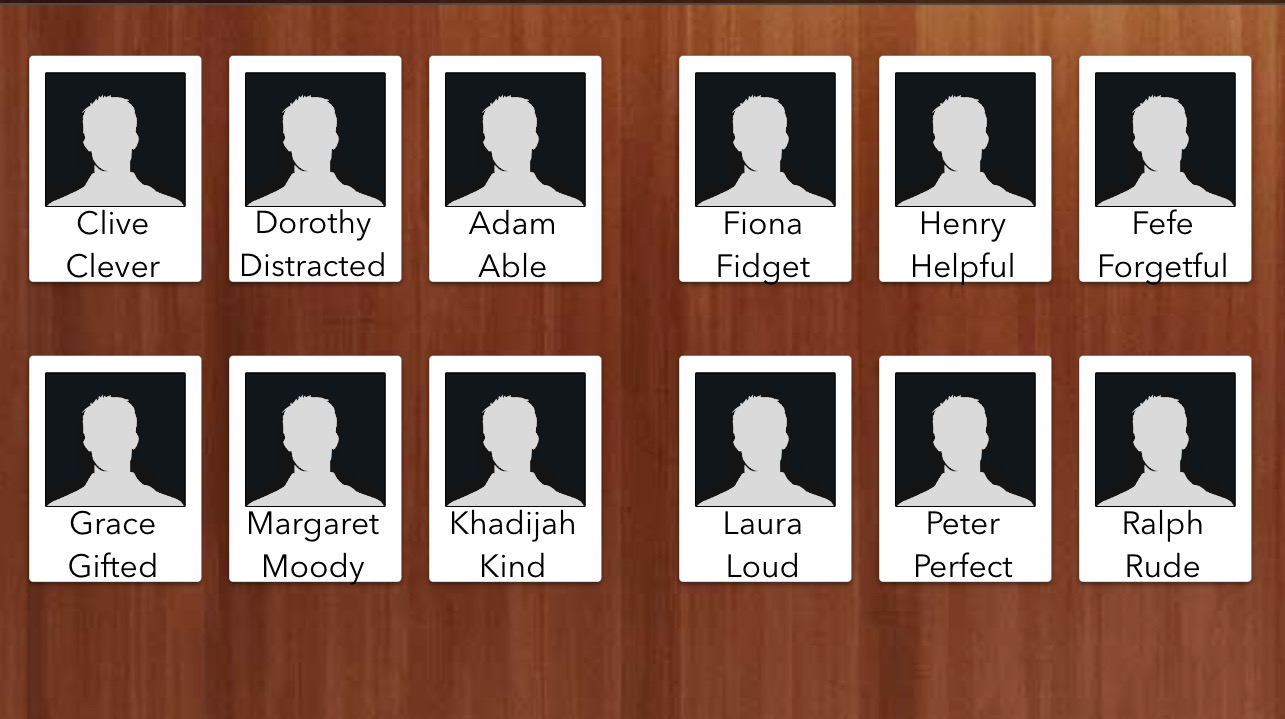
Classroom Seating Plans
I have tried all sorts of classroom seating plans for lots of different reasons over the years and I thought I would share some of them with you. It’s all too easy to start the year with students sitting in alphabetical order and then forget about seating plans as a valuable teaching strategy.
Having said that, I do start the year with younger classes sitting in alphabetical order. The primary reason for this is to help me to get to know their names. Some schools even have a policy that classes have to be in alphabetical order. Each time I do the register I look at their face and say their name again in my head to help me learn them.
Classroom Seating Plans and Raising Attainment
The best reason I can think of to use seating plans is to raise attainment. Research from Montana State University has clearly shown a huge attainment increase for the lower ability students, with no detrimental impact on the high ability pupils when teachers set up a mixed ability seating plan. So how do you do this in the art classroom? The data we get on students is often based on academic tests and isn’t always that accurate for ability in art. It’s my belief that it’s much better to do your own baseline testing or take an average grade to make your own assessment of your students. Use this art-specific data to help you create a seating plan.
Of course, you need to combine this with your professional judgement too. As you get to know your students you’ll know who has a positive or negative effect on other students, regardless of ability. Additionally, two students who don’t get along are not going to work well together. (Oh my goodness! So much to consider!)
Behaviour and Classroom Seating Plans
Sometimes we need to reseat students because of behavioural difficulties. You might be splitting students up in an attempt to separate poorly behaved students or to negate low-level disruption. This is a simple and effective teaching strategy. Because I like to create a positive learning environment, I’d rather re-seat the whole class at the start of the next lesson than pick out individual students and move them. This also gives me time to really think about it.
I’ve heard teachers say on social media, that they have classes with too many poorly behaved students and that it’s impossible to split them up. All you can do in this case is split as many up as possible. For me, this used to be on paper but in recent years has been in my iPad App iDoceo which has a seating plan tab where you can drag and drop students into place. You need to think who is on each table, who they are opposite and adjacent to, and which tables are near each other. You can think you’ve split students up but if they are back to back and keep turning around to talk to each other, this can feel worse!
When the class arrives I would line them up down one side of the room. Then call their names and direct them to where I want them to sit. I wouldn’t feel it necessary to explain myself other than to say it was time for a change.
Fun seating plans…
If you have a dream class who are all engaged and achieving their potential, I still think it’s good to change the seating plan from time to time. I have used some fun strategies to create a new order for them to sit in. For example, I have got them to stand in a long line and asked them to sort themselves by height order. On another occasion, I have asked them to sort themselves by shoe size, or by birth date. Anything to mix it up & keep it fun. I then go along the line and direct them to go to certain tables.
If you have some strategies to share regarding classroom seating plans, please comment below.
The Arty Teacher is home to quality art resources enjoyed by art teachers around the globe. Why not check out these Halloween art lessons that still teach your students the skills they need?





I tell my high school students that the seating chart (& monthly changes to it) allows them to get to know students in other grade levels and be inspired by the art created by a variety of their peers. I also tell them that it’s not my goal to torture them, so they just need to quietly tell me if they have a personality conflict with someone at their table.
I like your positive approach. You are right, it is good to be inspired by other students.
How do you do your art testing in the beginning of the year? Do you make your own art test?
Hi Susan,
We have a series of lessons at the beginning of the first year in senior school that tests the students on a variety of skills. (Drawing, research & presentation and art analysis). We take an average with a slight weighting towards drawing. This gives the student a target for the year. We’re lucky that we are the only department in our school that is allowed to ignore the general testing data and this is because it just isn’t accurate for attainment in art. In subsequent years we look at the end of year grade from the previous year. Sarah